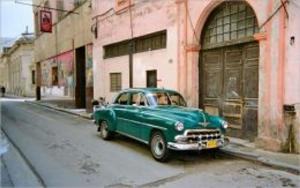| Author: | Steve Glines | ISBN: | 9781458144485 |
| Publisher: | Wilderness House Press | Publication: | January 17, 2010 |
| Imprint: | Smashwords Edition | Language: | English |
| Author: | Steve Glines |
| ISBN: | 9781458144485 |
| Publisher: | Wilderness House Press |
| Publication: | January 17, 2010 |
| Imprint: | Smashwords Edition |
| Language: | English |
Fiji is part of the Pacific Ocean’s “Ring of Fire,” a large collection of current and extinct volcanoes. Think of Fiji as Hawaii’s southern brother. Fiji is a continental island that rests on its own plate. The oldest rocks in Fiji are about 40,000,000 years old. The island nation is made up of some 300 islands (at high tide) scattered over a small corner of the South Pacific. The higher islands are mostly made of basalt while the smaller atolls of reef formed limestone. The basalt, unlike the granite of New England, is relatively soft and porous. Weathering by wind and rain has given them a sharper, more vertical edge than the more rounded slopes we are used to in the north east coast of North America. Most of the islands of the south Pacific have this same geological look and feel. Tahiti, for example has a similar geological structure.
The island of Viti Levu, the main island in Fiji, is surprisingly large, about 100 miles (160 km) in diameter at its widest spot. To get to Suva, where I was going on business was 200 km (125 miles) by car but the company I was working for had made arrangements for me to fly to the airport nearest Suva at Nausori. The airport at Nadi is like every other international airport in the world. People speak English, the signs are in English and the Duty Free shops has the same overpriced merchandise found in any Duty Free shop anywhere in the world. The Nadi airport is not Fiji.
I had a window seat for the uneventful flight from Nadi to Nausori. From my seat I could see the tall ridges and valleys, roads and farmland, villages and dense jungle. The interior of the island is very thinly populated. The few roads I could see from my window were obviously dirt tracts leading along the valley bottom to small hamlets generally near a lake or on a river. As we descended into the Nausori airport we followed the Waimanu river as it grew from a relatively small stream to a large river navigable by fishing boats. The first thing that stuck me after landing at Nausori was how small the airport was and how quickly I could find a cab. My next surprise (and it should not have been a surprise) was that the Fijians drive on the wrong, that is British, side of the street.
Fiji is part of the Pacific Ocean’s “Ring of Fire,” a large collection of current and extinct volcanoes. Think of Fiji as Hawaii’s southern brother. Fiji is a continental island that rests on its own plate. The oldest rocks in Fiji are about 40,000,000 years old. The island nation is made up of some 300 islands (at high tide) scattered over a small corner of the South Pacific. The higher islands are mostly made of basalt while the smaller atolls of reef formed limestone. The basalt, unlike the granite of New England, is relatively soft and porous. Weathering by wind and rain has given them a sharper, more vertical edge than the more rounded slopes we are used to in the north east coast of North America. Most of the islands of the south Pacific have this same geological look and feel. Tahiti, for example has a similar geological structure.
The island of Viti Levu, the main island in Fiji, is surprisingly large, about 100 miles (160 km) in diameter at its widest spot. To get to Suva, where I was going on business was 200 km (125 miles) by car but the company I was working for had made arrangements for me to fly to the airport nearest Suva at Nausori. The airport at Nadi is like every other international airport in the world. People speak English, the signs are in English and the Duty Free shops has the same overpriced merchandise found in any Duty Free shop anywhere in the world. The Nadi airport is not Fiji.
I had a window seat for the uneventful flight from Nadi to Nausori. From my seat I could see the tall ridges and valleys, roads and farmland, villages and dense jungle. The interior of the island is very thinly populated. The few roads I could see from my window were obviously dirt tracts leading along the valley bottom to small hamlets generally near a lake or on a river. As we descended into the Nausori airport we followed the Waimanu river as it grew from a relatively small stream to a large river navigable by fishing boats. The first thing that stuck me after landing at Nausori was how small the airport was and how quickly I could find a cab. My next surprise (and it should not have been a surprise) was that the Fijians drive on the wrong, that is British, side of the street.















